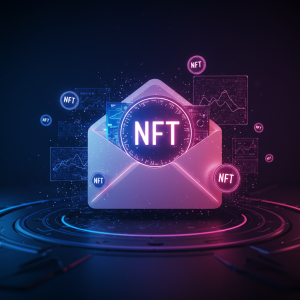NFT Marketing Attribution: Measuring What Truly Moves the Market

The explosive growth of non-fungible token markets has created fierce competition among creators and projects seeking collector attention. Yet many teams struggle with a fundamental question: which marketing efforts actually drive results? Understanding attribution in the NFT space requires specialized approaches that account for the unique aspects of digital collectible communities and purchasing behaviors.
The Attribution Challenge in NFT Markets
Marketing attribution for NFT projects presents unique complexities compared to conventional e-commerce or digital products. The journey from initial awareness to purchase often spans multiple platforms, communities, and touchpoints with varying levels of influence on buying decisions.
Most collectors encounter projects through fragmented pathways—perhaps first glimpsing artwork on Twitter, then joining Discord discussions, before finally researching tokenomics on dedicated platforms. This multi-channel journey makes traditional last-click attribution models woefully inadequate for NFT marketing.
Furthermore, the social and community aspects of NFT ownership create attribution challenges not seen in other markets. When collector decisions are heavily influenced by community sentiment, influencer opinions, and social proof, measuring these softer factors becomes essential yet notoriously difficult.
Multi-Touch Attribution Models for NFT Campaigns
Sophisticated NFT projects increasingly employ multi-touch attribution models that acknowledge the complex pathways to conversion. These approaches distribute credit across various touchpoints rather than assigning full value to any single interaction.
Time-decay models have proven particularly effective, assigning progressively higher value to touchpoints closer to the eventual mint or purchase while still acknowledging earlier awareness-building activities. This approach recognizes that while Discord engagement might immediately precede purchase, earlier Twitter exposure or influencer mentions laid necessary groundwork.
According to research from NFT Marketing Institute, projects implementing multi-touch attribution report 31% more accurate ROI calculations compared to those using simpler models.
On-Chain Analytics Integration
The blockchain’s transparency offers unprecedented attribution opportunities unavailable in traditional marketing. Wallet address tracking enables marketers to connect specific promotional activities to actual purchasing behaviors with remarkable precision.
Advanced projects now implement wallet tagging systems that trace acquisition sources through the entire funnel. When collectors arrive through differentiated links containing unique parameters, these identifiers can follow their wallets through to eventual purchase, creating direct attribution lines between specific campaigns and sales outcomes.
This capability allows for extraordinarily precise attribution, particularly when collectors participate in dedicated whitelisting processes or token-gated experiences that provide clear origin data points.
Community-Based Attribution Metrics
The community-centric nature of successful NFT projects necessitates attribution models that incorporate engagement metrics alongside direct conversion data.
Discord activity patterns, Twitter engagement rates, and community growth velocities often serve as leading indicators of mint success. Projects tracking these metrics can attribute value to campaigns that boost community vitality even before sales data materializes.
Attribution models weighing community health metrics have proven especially valuable for long-term projects where immediate sales represent only a fraction of overall success. Our analysis at NFTMarketo has consistently shown that community engagement metrics predict secondary market performance with surprising accuracy.
Cross-Platform Attribution Challenges
NFT marketing typically spans numerous platforms simultaneously—Twitter, Discord, Telegram, Reddit, specialized NFT platforms, and increasingly, mainstream media channels. Tracking customer journeys across these disconnected environments presents significant technical challenges.
Progressive teams implement cross-platform tracking through techniques like:
Custom landing pages with distinct UTM parameters for each promotional channel
Discord onboarding flows that capture attribution data during community joining
Wallet connection processes that record referral sources
Campaign-specific smart contract interactions that permanently encode attribution data
These approaches help construct more complete attribution pictures, though perfect cross-platform tracking remains elusive even for sophisticated projects.
Influencer Attribution Complexities
Influencer marketing represents a particularly challenging attribution area for NFT projects. When prominent collectors or crypto personalities promote projects, their impact often extends far beyond direct referral links or trackable mentions.
Attribution models must account for both direct and halo effects of influencer involvement. While direct referrals can be tracked through dedicated links or codes, the broader awareness and credibility benefits require more nuanced measurement approaches.
Some projects implement delayed attribution models specifically for influencer campaigns, measuring collection performance metrics before influencer involvement and tracking changes in awareness, sentiment, and ultimately sales velocity in subsequent periods.
Discord-Specific Attribution Methods
Given Discord’s centrality in NFT community building, specialized attribution methods have evolved specifically for this platform.
Role-based attribution tracking assigns unique roles to members based on their entry points, allowing teams to segment community members by acquisition channel. Activity analysis by role group then reveals which sources deliver not just raw member numbers but genuinely engaged participants.
Discord verification processes create additional attribution opportunities. By implementing custom verification workflows with origin tracking, projects gain clearer pictures of which channels produce not just community members but verified participants likely to convert.
Practical Implementation for Projects
Implementing effective attribution for NFT projects requires thoughtful planning before campaign launch. Tags, tracking parameters, and measurement frameworks must be established in advance to capture accurate data.
Wallet-based attribution presents perhaps the most powerful approach, though it requires technical infrastructure connecting promotional channels with on-chain activity. For projects lacking such capabilities, cohort analysis comparing marketing activities against mint timing provides a practical alternative.
The most sophisticated projects implement multi-level attribution frameworks combining:
Technical tracking through UTM parameters and referral codes Wallet address monitoring across promotional activities Community engagement correlation analysis Post-purchase surveys capturing self-reported discovery methods
This layered approach compensates for the inevitable gaps in any single attribution method.
Future Evolution of NFT Marketing Attribution
As the NFT space matures, attribution methodologies continue evolving. Emerging approaches leverage blockchain’s unique capabilities, including token-gated analytics platforms that provide collectors incentives for sharing attribution data.
Smart contracts increasingly incorporate attribution parameters directly, creating immutable records of acquisition channels. This on-chain attribution data becomes particularly valuable when analyzing secondary market behaviors and long-term collector value.
The integration of machine learning with attribution systems represents another frontier, allowing for predictive modeling that identifies high-value marketing channels before traditional metrics capture their impact.
Conclusion
Effective NFT marketing attribution requires specialized approaches acknowledging the unique aspects of digital collectible ecosystems. The multi-platform nature of collector journeys, combined with strong community influences and blockchain’s technical capabilities, necessitates attribution models far more sophisticated than those used in conventional digital marketing.
Projects investing in robust attribution frameworks gain crucial advantages in optimizing marketing spend, identifying high-value community-building channels, and understanding the complex factors driving collector decisions. As competition for collector attention intensifies, these attribution insights increasingly separate successful projects from those struggling to gain traction.








